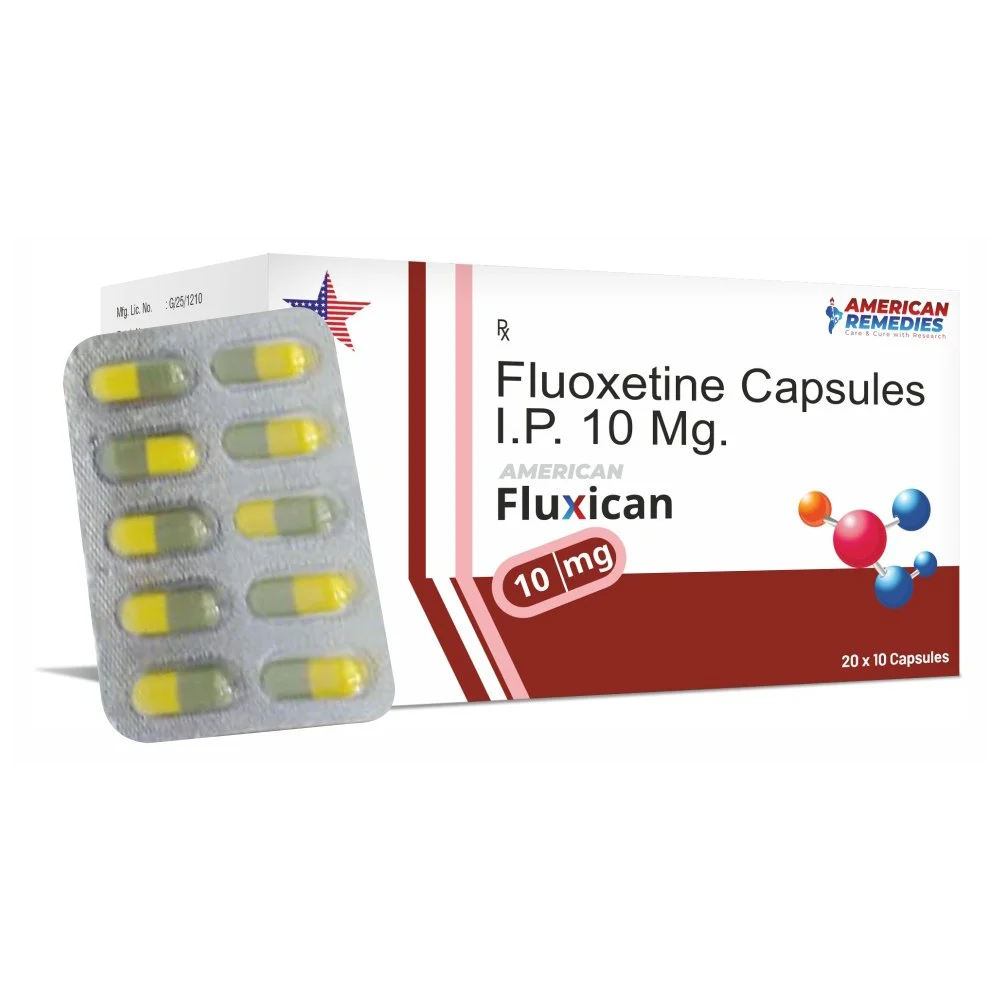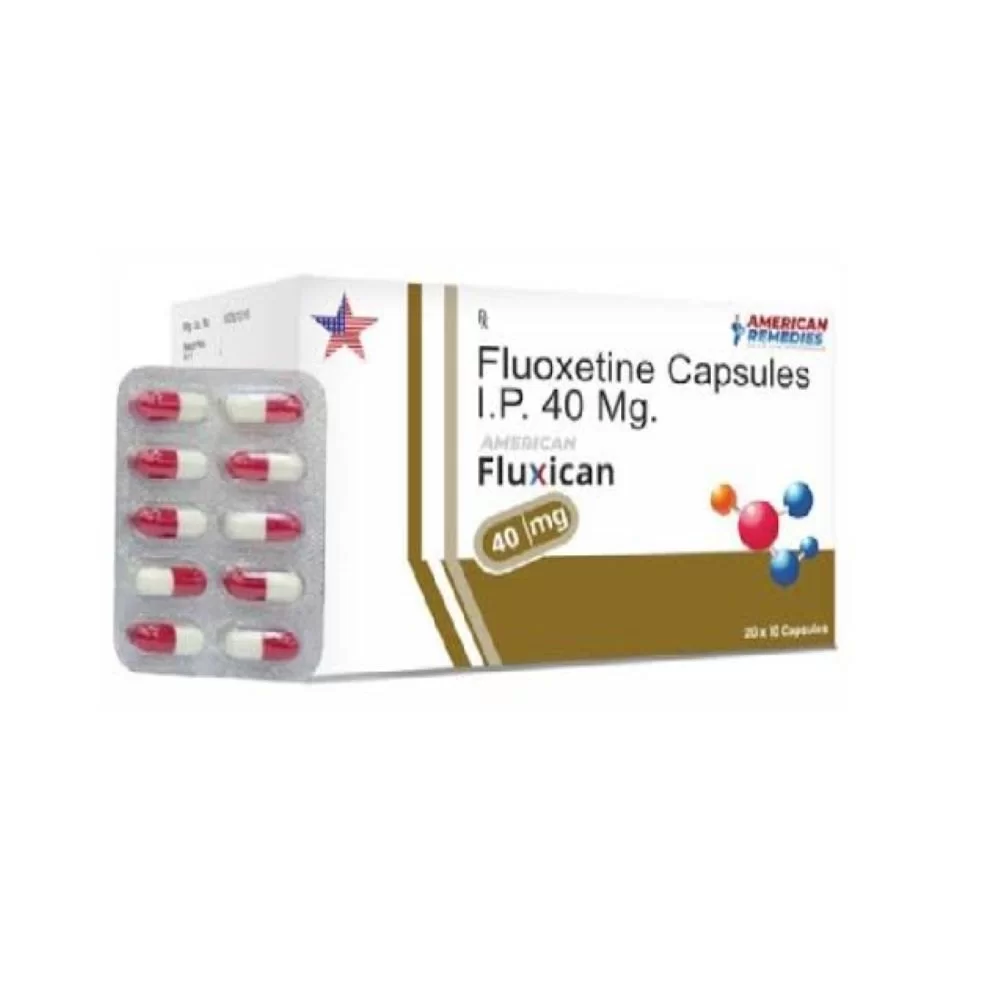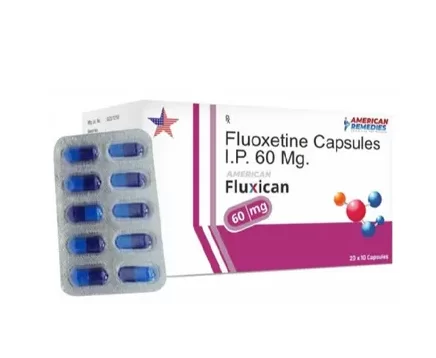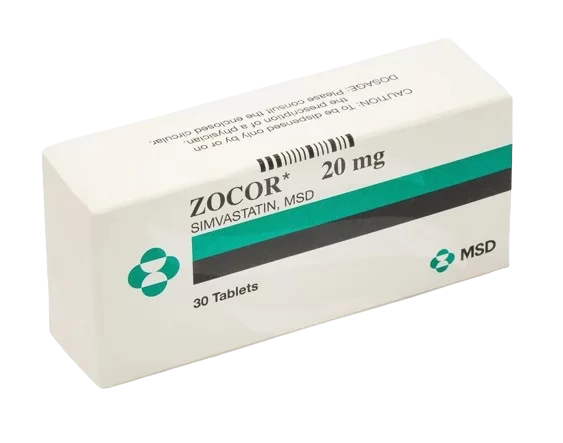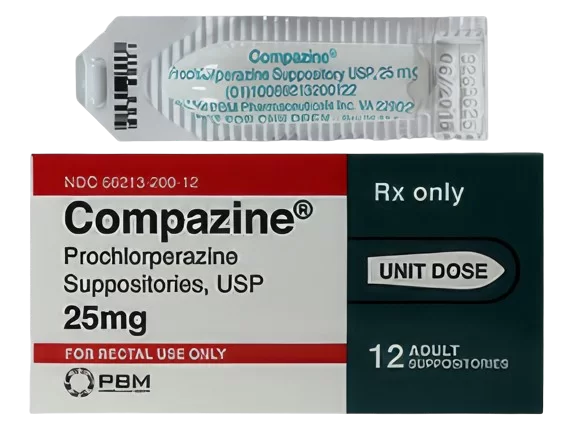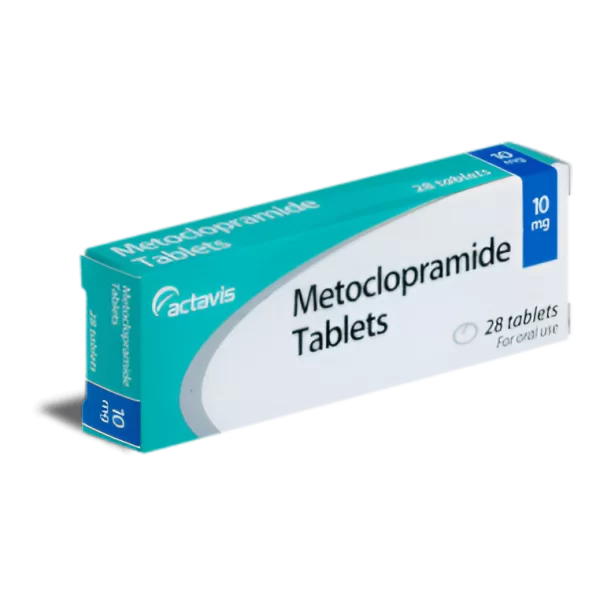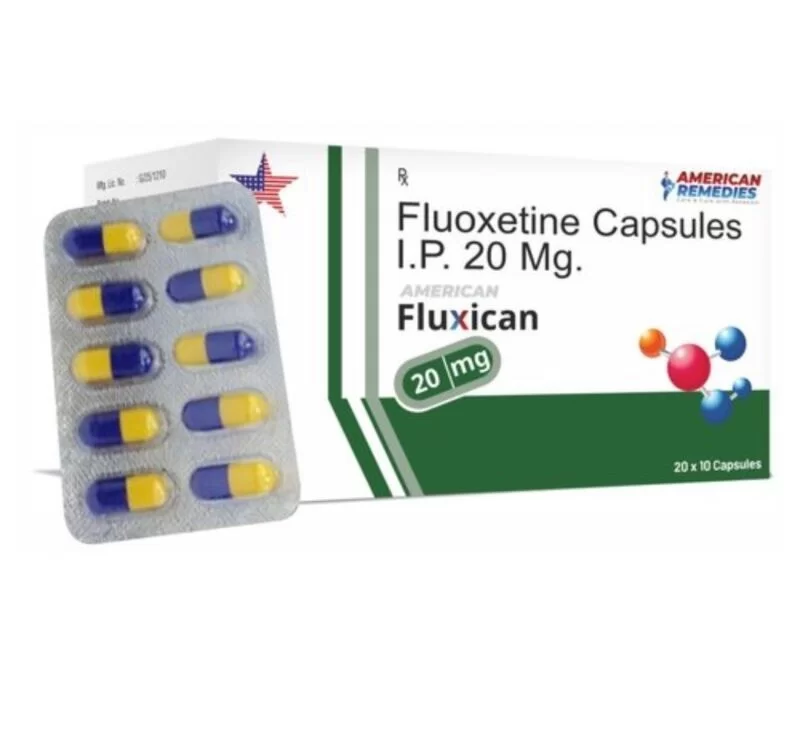
Fluoxetine
Fluoxetine - 20mg
| Product | Per Pill | Savings | Per Pack | Order |
|---|---|---|---|---|
| 60 caps | $0.66 | $39.60 | Buy Now | |
| 90 caps | $0.60 | $5.70 | $59.40 $53.70 | Buy Now |
| 120 caps | $0.57 | $11.41 | $79.21 $67.80 | Buy Now |
| 180 caps | $0.53 | $22.81 | $118.81 $96.00 | Buy Now |
| 270 caps | $0.51 | $39.92 | $178.22 $138.30 | Buy Now |
| 360 caps | $0.50 | $57.03 | $237.62 $180.59 | Buy Now |
Fluoxetine - 10mg
Overview of Fluoxetine
General Introduction to Fluoxetine
- Fluoxetine is a widely used antidepressant belonging to the class of selective serotonin reuptake inhibitors (SSRIs). It is primarily prescribed to treat major depressive disorder, obsessive-compulsive disorder (OCD), bulimia nervosa, and panic disorder. Fluoxetine works by increasing the levels of serotonin in the brain, which helps improve mood, reduce anxiety, and alleviate symptoms of depression. It is available in various forms, including oral tablets, capsules, and liquid solutions.
Key Benefits and Unique Properties of Fluoxetine
- Effective Antidepressant: Fluoxetine effectively treats major depressive disorder, helping to alleviate symptoms and improve overall mood.
- Management of OCD: Reduces obsessive-compulsive behaviors and helps patients manage their symptoms more effectively.
- Bulimia Nervosa Treatment: Proven to reduce binge-eating and purging behaviors in patients with bulimia nervosa.
- Panic Disorder Relief: Helps reduce the frequency and severity of panic attacks.
- Long Half-Life: Fluoxetine has a long half-life, which means it stays in the body longer, allowing for more stable blood levels and reducing the risk of withdrawal symptoms.
- Once-Daily Dosing: Convenient once-daily dosing improves patient adherence to treatment regimens.
Effectiveness of Fluoxetine
- Clinical studies have demonstrated the effectiveness of Fluoxetine in treating depression, OCD, bulimia nervosa, and panic disorder. It has been shown to improve mood, reduce anxiety, and alleviate symptoms associated with these conditions. Fluoxetine's long-term efficacy and safety have been well-documented, making it a trusted choice for many patients and healthcare providers.
Safety and Tolerability of Fluoxetine
- Fluoxetine is generally well-tolerated, but patients should be aware of potential side effects such as nausea, headache, dizziness, insomnia, and dry mouth. Serious side effects are rare but can include serotonin syndrome, suicidal thoughts, and severe allergic reactions. Regular monitoring and adherence to prescribed doses minimize these risks.
Indications for Use of Fluoxetine
Diseases and Conditions Treated by Fluoxetine
- Fluoxetine is indicated for the treatment of major depressive disorder, obsessive-compulsive disorder (OCD), bulimia nervosa, and panic disorder. It may also be used off-label for other conditions such as premenstrual dysphoric disorder (PMDD) and post-traumatic stress disorder (PTSD).
Primary Symptoms and Indications for Fluoxetine
- Depression: Alleviates symptoms of major depressive disorder, including persistent sadness, loss of interest in activities, and fatigue.
- Obsessive-Compulsive Disorder: Reduces obsessive thoughts and compulsive behaviors associated with OCD.
- Bulimia Nervosa: Decreases the frequency of binge-eating and purging episodes.
- Panic Disorder: Helps manage and reduce the frequency and intensity of panic attacks.
Dosage and Administration of Fluoxetine
Recommended Dosage of Fluoxetine
- The typical starting dose for major depressive disorder is 20 mg once daily, which may be increased based on the patient's response. For OCD, the dose ranges from 20 mg to 60 mg daily. In the treatment of bulimia nervosa, the usual dose is 60 mg per day. For panic disorder, the starting dose is usually 10 mg daily, which can be increased to 20 mg or higher based on efficacy and tolerability.
Timing and Frequency of Fluoxetine Administration
- Fluoxetine is typically taken once daily, either in the morning or evening. The dose can be adjusted depending on the patient's response and any side effects experienced. It is important to take Fluoxetine at the same time each day to maintain consistent blood levels.
Additional Recommendations for Fluoxetine Use
- Proper Use: Follow the dosing instructions provided by a healthcare professional. Fluoxetine can be taken with or without food.
- Missed Dose: If a dose is missed, take it as soon as remembered unless it is almost time for the next dose. Do not double the dose to make up for the missed one.
- Monitoring: Regular follow-up appointments with a healthcare provider are important to monitor the effectiveness of the medication and any potential side effects.
Mechanism of Action of Fluoxetine
Description of Fluoxetine Mechanism
- Fluoxetine works by inhibiting the reuptake of serotonin, a neurotransmitter, in the brain. By preventing serotonin from being reabsorbed into nerve cells, Fluoxetine increases the levels of serotonin available in the brain, which helps improve mood and reduce symptoms of depression and anxiety.
Biochemical Processes Involving Fluoxetine
- Inhibition of Serotonin Reuptake: By blocking the serotonin transporter, Fluoxetine increases the concentration of serotonin in the synaptic cleft, enhancing its availability to bind to receptors and exert its effects.
- Neurotransmitter Regulation: Fluoxetine helps regulate the balance of neurotransmitters in the brain, which is crucial for mood stabilization and reducing anxiety.
Physiological Effects of Fluoxetine
- Mood Improvement: Increases serotonin levels, leading to improved mood and reduction of depressive symptoms.
- Anxiety Reduction: Helps reduce anxiety and stress by stabilizing neurotransmitter levels.
- Obsessive-Compulsive Behavior Control: Reduces the severity of obsessive-compulsive behaviors by modulating serotonin levels.
Composition of Fluoxetine
- Ingredients in Fluoxetine
- Fluoxetine contains the active ingredient fluoxetine hydrochloride, which is responsible for its therapeutic effects.
- Inactive ingredients in Fluoxetine formulations may include gelatin, silicon dioxide, titanium dioxide, and other excipients that help stabilize the formulation and ensure proper delivery of the medication.
Side Effects of Fluoxetine
General Introduction
- Understanding potential side effects helps ensure the safe use of Fluoxetine. Patients should be aware of common and serious side effects to monitor their health effectively while on the medication.
Possible Side Effects of Fluoxetine
- Common Side Effects: Nausea, headache, dizziness, insomnia, dry mouth, and fatigue.
- Less Common Side Effects: Increased sweating, weight changes, and sexual dysfunction.
- Serious Side Effects: Rare but serious side effects include serotonin syndrome, suicidal thoughts, severe allergic reactions, and abnormal bleeding.
Frequency and Severity of Fluoxetine Side Effects
- Common side effects are generally mild and manageable with dose adjustments and supportive care. Serious side effects are rare but can be life-threatening, necessitating immediate medical intervention. Regular follow-ups and patient education on correct usage can minimize risks.
Prevention of Side Effects of Fluoxetine
General Introduction
- Preventing side effects is key to maximizing the therapeutic benefits of Fluoxetine. By following preventive measures, patients can reduce the likelihood of experiencing adverse reactions.
Tips for Preventing Fluoxetine Side Effects
- Proper Technique: Use Fluoxetine as directed, following the instructions for proper administration.
- Regular Monitoring: Regular check-ups with healthcare providers can help detect and manage potential side effects early.
- Consult Healthcare Providers: Inform your healthcare provider about any other medications or supplements to avoid potential interactions.
- Adherence to Dosage: Do not abruptly stop taking Fluoxetine; follow your healthcare provider’s instructions to taper the dose if necessary.
- Hydration and Nutrition: Maintain adequate hydration and a balanced diet to support overall health.
Contraindications for Fluoxetine
General Introduction
- Understanding contraindications ensures the safe use of Fluoxetine. Certain conditions and diseases may preclude the use of this medication.
Conditions and Diseases Contraindicating Fluoxetine
- Hypersensitivity: Patients with a known hypersensitivity to Fluoxetine or any of its components should not use this medication.
- Monoamine Oxidase Inhibitors (MAOIs): Concurrent use with MAOIs is contraindicated due to the risk of serotonin syndrome. A 14-day gap is required between discontinuing an MAOI and starting Fluoxetine.
- Severe Liver Disease: Use with caution in patients with severe liver impairment, as it may affect the metabolism and excretion of the drug.
- Pregnancy and Breastfeeding: Use during pregnancy and breastfeeding should be under the guidance of a healthcare provider, considering the potential risks and benefits.
Warnings/Precautions for Fluoxetine
General Introduction
- Following precautions is essential to ensure the safe and effective use of Fluoxetine. Patients should be informed about potential risks and how to mitigate them.
Important Warnings for Fluoxetine
- Suicidal Thoughts: Monitor for signs of suicidal thoughts or behaviors, especially in the initial treatment period or during dose adjustments.
- Serotonin Syndrome: Be alert for symptoms of serotonin syndrome, such as agitation, hallucinations, and rapid heart rate.
- Abnormal Bleeding: Inform patients about the increased risk of abnormal bleeding, particularly if they are taking anticoagulants or NSAIDs.
- Mania/Hypomania: Monitor patients with a history of bipolar disorder for signs of mania or hypomania.
Precautions for Fluoxetine Use
- Regular Monitoring: Regular check-ups with healthcare providers are essential to monitor for potential side effects and ensure effective treatment.
- Patient Education: Educate patients on the signs and symptoms of serious side effects and when to seek medical help.
- Lifestyle Adjustments: Encourage lifestyle modifications such as maintaining a balanced diet, regular exercise, and avoiding alcohol consumption to support overall health.
Missed Dose of Fluoxetine
General Introduction
- Proper management ofmissed doses helps maintain effective treatment outcomes. Patients should be aware of how to handle missed doses to avoid disruptions in their treatment regimen.
Steps to Take if a Dose is Missed
- Timely Action: Take the missed dose as soon as remembered unless it is almost time for the next dose.
- Avoid Doubling: Do not double the dose to make up for the missed one. Instead, continue with the next dose as scheduled.
Tips for Adherence to Dosing Schedule
- Set Reminders: Use alarms or reminders on your phone to remember to take your doses.
- Consistent Routine: Take the medication at the same time every day to reduce the likelihood of missing a dose.
- Medication Organizer: Use a pill organizer to keep track of your doses and avoid missing any.
Drug Interactions with Fluoxetine
General Introduction
- Understanding drug interactions is crucial for ensuring the safe use of Fluoxetine. Some medications can affect the action of Fluoxetine or increase the risk of side effects.
Examples of Drug Interactions
- Anticoagulants: Concurrent use with anticoagulants (e.g., warfarin) can increase the risk of bleeding.
- Other SSRIs or SNRIs: Concurrent use with other SSRIs or SNRIs can increase the risk of serotonin syndrome.
- Tricyclic Antidepressants (TCAs): Fluoxetine can increase the blood levels of TCAs, potentially leading to toxicity.
- NSAIDs: Combined use can increase the risk of gastrointestinal bleeding.
- Lithium: Fluoxetine can increase lithium levels, leading to toxicity.
Preventing Negative Interactions
- Inform Healthcare Providers: Inform your healthcare provider about all medications and supplements you are taking.
- Monitor for Symptoms: Watch for signs of side effects or unusual reactions and report them to your healthcare provider promptly.
- Read Labels Carefully: Check labels for potential interactions with other medications, especially over-the-counter drugs that may also contain similar active ingredients.
Overdose of Fluoxetine
Symptoms of Overdose
- Common Symptoms: Overdose can lead to symptoms such as severe dizziness, fainting, extreme thirst, muscle pain or weakness, dry mouth, nausea, and vomiting.
- Severe Symptoms: Severe overdose may result in significant electrolyte imbalance, dehydration, and kidney failure.
Immediate Actions in Case of Overdose
- Seek Medical Help: Immediately seek medical attention if an overdose is suspected.
- Supportive Measures: Medical personnel may provide supportive measures such as monitoring vital signs, administering intravenous fluids, and correcting electrolyte imbalances.
Pharmacokinetics of Fluoxetine
Absorption
- Rate and Extent: Fluoxetine is well absorbed after oral administration, with peak plasma concentrations occurring within 6 to 8 hours.
Distribution
- Tissue Distribution: Fluoxetine is widely distributed throughout the body and is highly protein-bound, which affects its distribution in tissues.
Metabolism
- Metabolic Pathways: Fluoxetine is metabolized in the liver by the cytochrome P450 enzyme system, primarily CYP2D6.
Elimination
- Excretion: The drug and its metabolites are excreted primarily through the urine. Fluoxetine has a long half-life, ranging from 1 to 3 days for fluoxetine and 4 to 16 days for its active metabolite, norfluoxetine.
Dosage Forms of Fluoxetine
Available Forms and Strengths
- Oral Tablets: Typically available in 10 mg, 20 mg, and 40 mg strengths.
- Capsules: Available in 10 mg, 20 mg, and 40 mg strengths.
- Oral Solution: Available in a concentration of 20 mg/5 ml.
Advantages of Different Forms
- Oral Tablets and Capsules: Convenient for daily use and easy administration.
- Oral Solution: Suitable for patients who have difficulty swallowing tablets or capsules and allows for flexible dosing.
Pregnancy and Breastfeeding
Safety During Pregnancy
- Risks to Fetus: The safety of Fluoxetine during pregnancy has not been fully established. It may cause harm to the fetus if used in the third trimester, leading to complications such as persistent pulmonary hypertension of the newborn (PPHN).
- Recommendations: Pregnant women should use Fluoxetine only if clearly needed and under the guidance of a healthcare provider. Regular monitoring of both mother and fetus is recommended.
Safety During Breastfeeding
- Excretion in Breast Milk: Fluoxetine is excreted in breast milk in small amounts. The effects on a nursing infant are unknown, but there may be potential risks.
- Recommendations: Consult a healthcare provider before using Fluoxetine while breastfeeding to ensure safety for the mother and baby.
Storage Conditions
General Storage Recommendations
- Storage Temperature: Store at room temperature between 20°C to 25°C (68°F to 77°F).
- Protection from Light and Moisture: Keep in the original packaging, protected from light and moisture.
Shelf Life
- Expiration Date: Check the expiration date on the package and do not use the medication after it has expired.
Clinical Trials and Efficacy
Overview of Clinical Trials
- Study Design and Methods: Clinical trials include randomized controlled trials assessing the efficacy and safety of Fluoxetine in treating major depressive disorder, OCD, bulimia nervosa, and panic disorder.
Key Findings and Conclusions
- Efficacy Results: Studies have shown that Fluoxetine effectively reduces symptoms of depression, OCD, bulimia nervosa, and panic disorder. It is often used as a first-line treatment for these conditions.
- Safety Profile: Side effects are generally manageable with dose adjustments and monitoring. Serious side effects are rare when used correctly.
Conclusion
Summary of Key Aspects:
- Fluoxetine is a versatile medication for managing major depressive disorder, OCD, bulimia nervosa, and panic disorder. It offers significant benefits in symptom relief and has multiple administration routes for flexibility in treatment.
Recommendations for Improving Therapy:
- Follow healthcare professional instructions, adhere to prescribed dosages, and attend regular check-ups to optimize treatment and minimize side effects. Monitoring and adjusting lifestyle factors, such as maintaining a balanced diet and regular exercise, can further enhance the therapeutic benefits.
Final Conclusion:
- Fluoxetine provides essential support in managing depression, anxiety, and related conditions, helping to improve the quality of life for patients. Proper use and adherence to precautions maximize the therapeutic benefits and minimize risks, offering substantial improvements in patient health and well-being.
